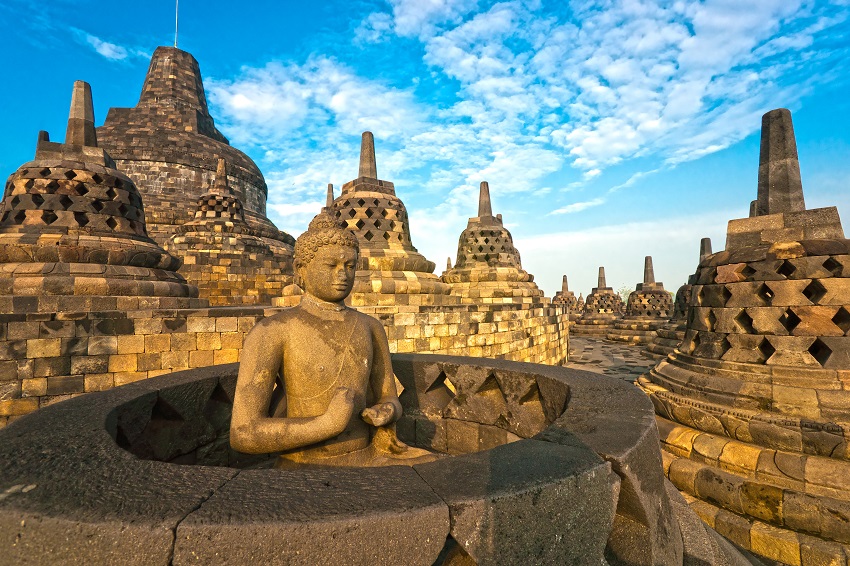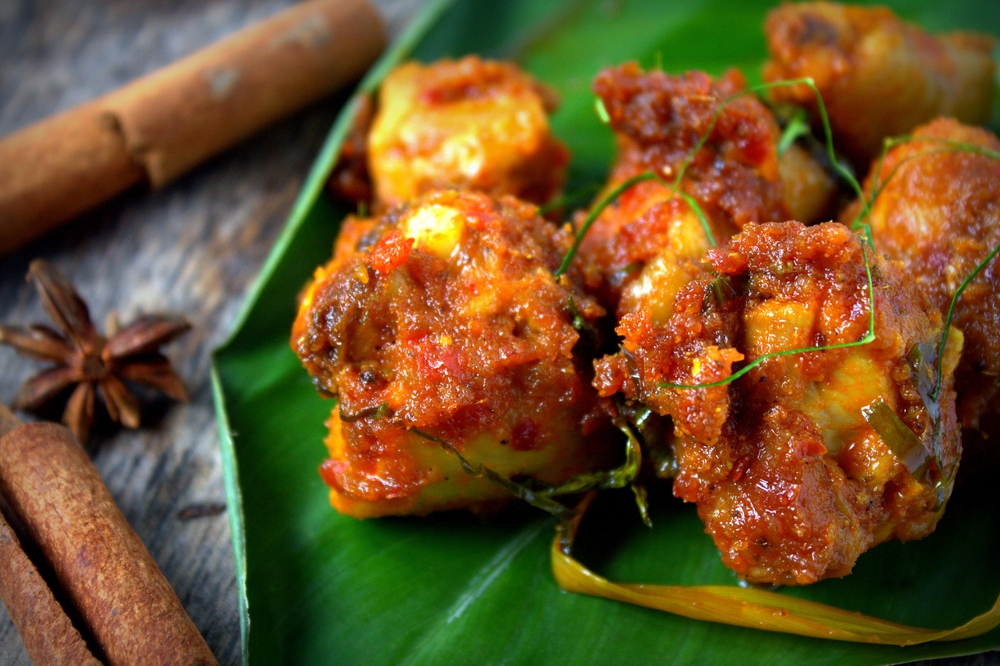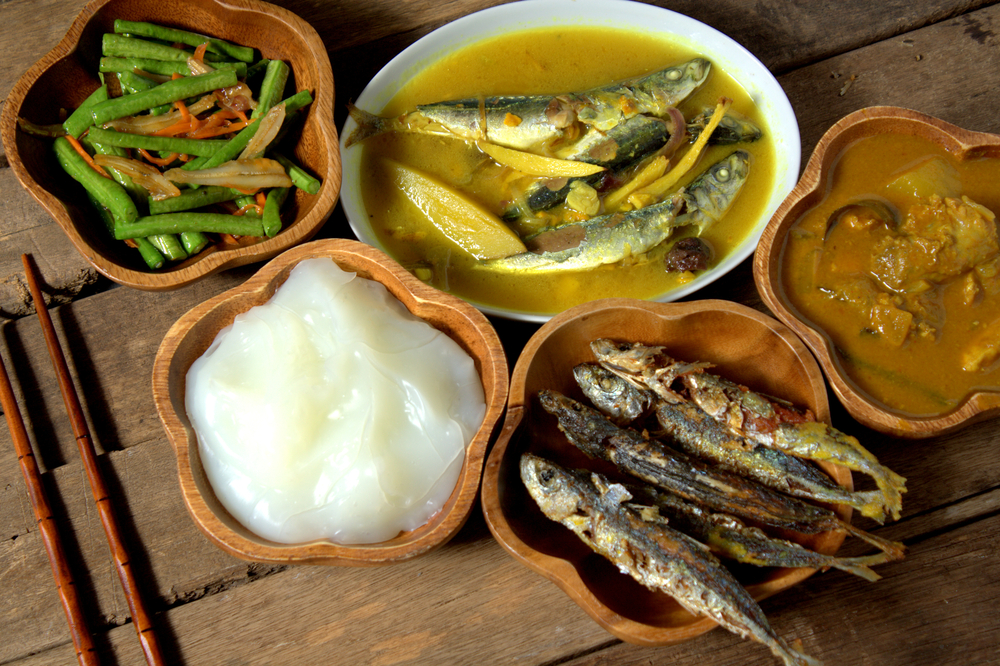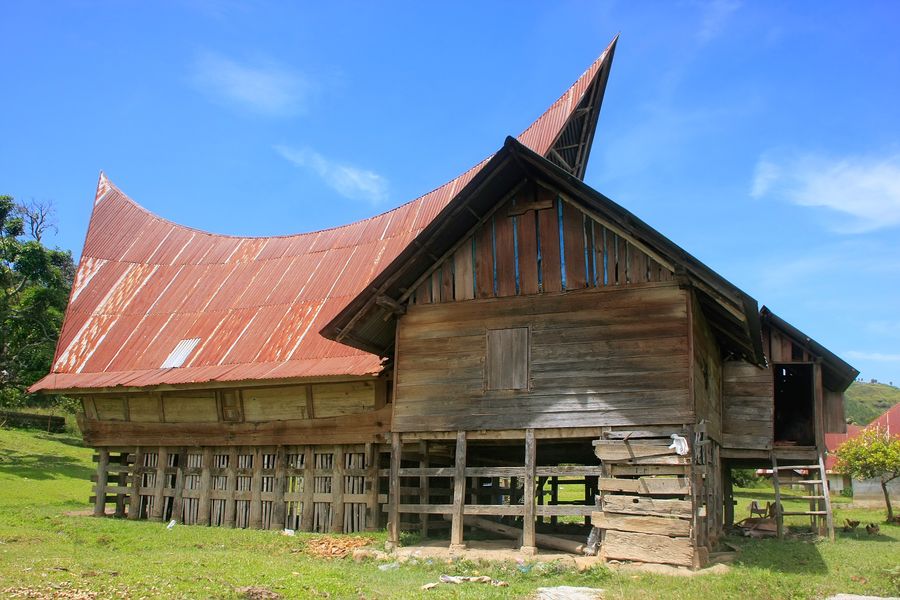Indonesia - history
1. Indonesia 1-1500: the Construction of Indonesia
It is a belief that the first group of settlers had immigrated from Northwest of India or Myanmar and South of China as it is the evidence explaining a pattern of settlement occurring on islands along coastal lines.
However, as the studies about the Indonesian immigrations grew deeper, different theories suggest that the first settlers might not have emigrated from farther lands. They were just moving around coastal islands because the stone tools were not much altered. Culture was more static, unlike others that had contacts with outside world. The native tribes being influenced by beliefs of Hinduism, Buddhism and Islam in later time is a result of interaction between the new religions and the old beliefs. It was not much different, but rather the adaptation of its own.
According to the studies about the first Indonesian’s beliefs, it suggests that the people believed in Animism in a way that every creatures and non-creatures has their own energy or soul. Certain places, objects and individuals are granted superpower. Not only did Animism exist everywhere like seas, mountains, rivers and animals, but also a belief of respecting ancestor souls. Rituals regarding this belief such as burying the dead’s belonging for his journey to the after death did exist.
Early evidences explains that tribes both on land and islands of Indonesia might have had contacts with the outside world, but very few. A number of frequency grew more after a course of time bringing about trades and cultural interactions like Indianisation, Hindu and Buddhist influences and Islamisation. It was when Westernization introduced Christianity and western civilization. The very first contact with the western world occurred through pilgrimages, priests and traders (2-414) according to the first historical records written in Southeast Asia. It was Chinese archives during Han Dynasty suggesting contacts with India and Southeast Asia. They exchanged innovations, trades and cultures.
When the influences of Buddhism and Hinduism arrived, they were more vivid in this region. Sanskrit records in early Hindu time was what the native had adopted, especially the ones relating to monarchy and ruling class at court. These were to underline the caste and relationships between classes in the society while the monarch was revere as a god.
On the other hand, Buddhism was adopted as if it were an institution for commoners. Mahayana Buddhism was a form of practice seen through building temples and statues. It was not until the 8th century when a form of governance changed and relied heavily on the India’s. The Great Srivijaya Empire on Sumatra Island had been powerful, but the momentum started shifting between other kingdoms on East Java like Janggala, Kediri, Singhasari and Machpahit. There are a number of great Buddhist sacred objects found during 750-850. Barabudur, for example, the famous world’s heritage of Indonesia, conveys a Buddhist idea of universe as the Buddha’s biography was seen on huge images engraved on the four walls of terrace. However, when Islam invaded Java, Barabodur was abandoned. Vines climbing around the place with volcanic ashes completely cut it off of the world. The sacred place was then discovered by soldiers of British Empire, the colonizer at that time, and was reconstructed by a cooperation with Dutch archeologist.
It was an inevitable competition when kingdoms in Indonesia were making appearances on the map. Srivijaya Empire on Sumatra and others or growing kingdoms on Java that started gaining the region’s momentum altogether joined the race. Trading centers and port cities including new trading routes were significantly increasing while a variety of goods became attractive. The coastal empire like Srivijaya had enjoyed its advantages since the 7th century. It was the trading center, educational center as well as Buddhist center according to Chinese records that tell a story of a Buddhist monk name Yi jing who travelled to Srivijaya. However, it was the 12th century when the empire started to decline because other kingdoms being beneficial from trades in southeast Java were stronger and more influential. The emigration from Palembang to relocate on Malay Peninsula occurring led to a fierce trade coopetition in Straits. Meanwhile Indonesia’ spice trades were so immense that port cities on Java Island were growing stronger.
The kingdoms on Java Island had been continuing growing since the 9th century. They had surrendered to Srivijaya before turning to Malay monarchs, so the momentum shifted from the central part to the eastern part of Java. Both large and small kingdoms on Java were friendly, but some appeared competitive in thriving and claiming the natural resources.
A shift of power from Srivijaya to Machpahit is also considered a shift of religious influence as well. When surrendering to the Malay monarchs, the kingdom rulers convert to Islam due to different factors. It is mainly because they wanted to liberate themselves from Srivijaya and looked for glorious trades with Malay, European and Chinese merchants. The trade between Machpahit and China was very successful due to Chinese trading policies during Ming Dynasty in 1368 (Brown, 2003, p. 27). In addition, Machpahit Kingdom expanding influences inspired its own culture and introduced the culture to other areas. Literature, arts and architecture being developed to be East Javanese culture and arts were dominating those areas and also expanding to other islands as seen in “Hikayat Banjar” (Brown, 2003, p. 28).
2. Indonesia 1400-1700: Islamic Invasion and Imperialism
A journey to the 14th century had seen the Buddhist dominance in the kingdoms located in Indonesi. However the Islamic invasion arrived through trades supported by the Buddhists. According to historical records, it is not clear when Islam first appeared in Indonesia, but one of the Muslim epitaphs suggested the body had been buried in 1082.
Islam grew stronger in Indonesia and replaced Hinduism and Buddhism, the older religions, in a way that it had blended in with native cultures and traditions. It was introduced by Sufi priests whose doctrine had a belief in superstitious, where it resonates to what the native had believed in. Thus, Islamic arrival seemed pretty common. Other factors contributing to the Islamic invasion could be that a Hindu caste in Indonesian society had never been strict as much as the Indian society, making the Islamic invasion easier. Though its arrival with peace succeeded at bonding the people, the religion was one of the factors contributing to trading competitions among the islands. So, the Islamic invasion really took time before becoming famous.
3. Indonesia 1600-1900: From Rising to Power to Imperialism in Decline Leading to Turbulent Politics and Economic Recession
The arrival of the westerners in Indonesia started during the 16th -18th century. It was the beginning of laying an influential trading foundation before claiming the land as a colony in the 19th – 20th century. The westerners were able to come to this land because in the 15th century the trading routes between Asia and Europe in Southeast Asia had been closed by the Turks. Asia’s most popular goods was spices that the traders had bought from India. Later, the Italian merchants managed to monopolize this kind of goods around Mediterranean, so the traders brought it to Europe and sold very expensively. It caused troubles especially to Spain, France, Portugal and Britain. These nations attempted to find the route across Persian Gulf so that they could travel to Asia. This led to the exploration era bringing about discoveries.
The Dutch came to Indonesia as traders taking control over important ports in North Java and other trading centers on islands selling spices. It was enough for them to achieve their goal (มิลตัน ออสบอร์น, 2544, หน้า 102). On the contrary, East India Company started growing and becoming a white hunter taking advantages of trades. It provoked conflicts among the farmers and led to the end of Matarum Kingdom in the 18th century. Meanwhile the Dutch were heavily involved with Javanese politics and took an interest in supervising the establishment of a state since Matarum Kingdom had fallen. The new state was founded at Yogyakarta and Surakarta, a main city in Central Java. In mid-18th century, East India Company claimed political power over almost the entire Java Island, but it was not too strict to affect the native or even the colonizer himself. The Dutch were trying to make more money by squeezing agricultural products out of the native so that they made the most benefits. They did so through forcing the farmer leaders and Chinese concessionaires, therefore, it inevitably sparked conflicts among the farmers including the elites.
The colonization before the 19th century had had less effects. However, during the 19th – 20th century, the Dutch colonization began growing into Indonesian islands very slowly and had effects on the native. The expansion of colonialism resonates to the growing agricultural market exporting tropical products to Europe, and is also a response to other mighty nations’ Southeast Asian affairs. It is explicit there is a pressure among the colonizers over economic needs and their colonial competitions casting over Indonesian islands. A few command points or administrative centers were set up with the native leaders’ cooperation, yet this was not enough to serve the Dutch expansion. In the late 18th century, the Dutch government proceeding instead of East Indies Company that had been closed earlier found ways to take control the islands while establishing the same administration for every native. This form of governance led to serious conflicts with the native armed forces especially those in Sumatra areas. The Dutch had had to fight against the native for years before finally taking ultimate control over them in the late 19th century.
As the 20th century was approaching, the foundations of the Dutch’s East Indies were islands were already established. The victory and the treaty enabled the Dutch to take ultimate control over the islands ranging from West Sumatra to the western part of East New Guinea while the Portuguese secured a small colony on East Timor that fell through the Dutch hands expanding territories across Indonesian islands. Diversity in some areas became an effect in later time especially in Java, Central and East Java. The native who were farmers were growing poorer while the Dutch continued cultivating Christianity.
4. Indonesia 1900-1945: Time of Change, Seizing War, Independence Struggle and Becoming Independence
Since the beginning of the 20th century, Indonesian politics, administration and even society were dominated by the Dutch administration. Not only were the big cities in Central Java governed by such colonial administration, but also other cities and islands. Its administrative approach started altering when the Dutch imperialist policies were largely adopted. These inevitably penetrated into the people’s ways of life especially the one called “Ethical Policy” issued by the colonizer in 1901 in order to unify the people. However, it never worked and provoked even more conflicts. An attempt to develop the country worked against unifying the people dividing them into the European, the easterners and the native. The recognition of these three group of people comes with class. The European, though being a minority group, had the rights and privileges over others, especially the native who were the majority. Given the fact that the Dutch designed all just to rule, it worked against themselves and the native. Over the years, the Dutch saw many riots and the major one was when the native in Aceh rose up and fought for liberation. This time it encouraged coming together as a nationalist group in later time.
As the Dutch rule was expanding into different areas, it encountered the well-off in that locale in which the Indonesian received Dutch education and spoke Dutch. Meanwhile the Dutch were learning Malay being a foundation of modern Indonesia as a preparation for more Dutch expansions. When the Indonesian had further education, they started realizing they had been oppressed and segregated in so many ways making a gap or privileges among groups of people varied. For example, the Indonesia receiving western education did not get the same kind of job as the Chinese, the Eurasian and other westerners. They made less salary even though having the same degree.
Kartini had always wished to study in Holland and there were only 5 students in 1900. 8 years later a number increased to 23 students. A number of the founders of Indies Association including Indonesian and Eurasian students were increasing so they changed it to Perhimpunan Indonesia-Indonesian Association in Indonesian by replacing Indies with Indonesia. This incident was one of the factors contributing to forming nationalist ideas among the students. Some students who had western education came back to become the leaders of national movements (เอลซา ไซนุดิน, 2557, หน้า 239).
Since the colonizer felt threatened to give the native, the hesitated to take an interest in and offer more convenience founding schools for the Indonesian. Therefore, a number of schools founded had no vacancies for western-educated teachers. They worked at public schools instead. These later became suspicious for that they were wildly installing nationalism. However, the colonizer appeared less aware of this growing idea and its powerful movement. They believed those being western-educated were only handful sparkling little influences and pressures. What the colonizer had expected was not happening. The pressures grew bigger especially after the First World War when the colonizer viewed that nationalist ideas were encouraged by external factors like the US, Russia and even Japan. The educated native could no longer accept this form of governance.
After the First World War, Japan was expanding its trades to Indonesian islands and other indigenous-inhabited islands. By 1929 Japan imported 11 per cent of the total products and continued importing to 30% in 1935. Despite the fact that Japan was importing 5 per cent of the total products from Indonesia, the Dutch felt insecure. In terms of regional trading, Japan made it clear they wanted to buy a great deal of oil, coal and minerals, while the Dutch were more willing to sell sugar, coffee, tea and tobacco first. But Japan had no interest in. It could supply those itself. The need of oil was to supply Japan’s industrial growth. During the 1930’s the Dutch limited Japanese affairs in Indonesia by issuing a law requiring import permit, regulating migrant workers and allowing some nationalities to enter the country. They took control over fisheries on its waters, meanwhile, Japan disagreed with the idea of limiting migrant workers because it promised inequality. Japan later did not hold back in expressing in joining The Greater East Asia Co-Prosperity Sphere as the leader in the same manner as Britain of the British Empire.
Japanese trades contributed to the native in Indonesia whose incomes were low. Products of Japan travelled to the colony and they were affordable so that the Indonesian with limited incomes could enjoy during the depression. The Chinese merchants being used to deliver the products restricted Japanese products. On the other hand, Japan viewed this opportunity as a rival to the Chinese.
When the war was declared in Europe in 1939, it seemed the Dutch’s East India had little effects.
In 1940 Germany invaded Holland, so the Dutch government evacuated to London. Japan sent counselors to Batavia whose interest in oil on Indonesian islands was conveyed, yet the Dutch did not cooperate. In response, Japan signed Tripartite with the Axis, Germany and Italy. The Dutch became more aggressive and was openly against Japan joining The Greater East Asia Co-Prosperity Sphere. In July the Dutch followed the US, Great Britain and Commonwealth by restraining Japanese business and cancelling the financial agreement Holland had with Japan in December 1941. Japan understood that the Allies cooperated in restricting Japanese economic growth, hence, they decided to attack Pearl Harbor, the US Navy Base. On the next day, Holland declare war against Japan even though they had had little time to prepare and defend Indonesian islands.
In January 1942 the first Japanese armed forces landed at Indonesia in hopes to seize oil storages on western East Borneo, Balikpapan and Palembang. Japan invaded this time just to claim what it had not received when signing the treaty. Three months after the declaration of war and only 8 days after Japan had invaded Java, Holland surrendered in the name of the Allies in Java. As a consequence, the native understood that Japan was prominent while Holland was weak facing the war time. In many areas of Indonesia, the people welcomed the Japanese armed forces as the liberator. Nonetheless, the Japanese arrival taught some native a form of colonization and its cruelty and betrayal.
Under the Japanese rule, Indonesia was divided into three parts, Java, Sumatra and Madura. Java was the center while eastern Indonesia was just the same as in the past. It relied on Javanese food and garments. Japan had taken a year before succeeding at putting all Dutch in jail. A very few Dutch covered their background so that they would not be sentenced. Japan closed all Dutch schools and Dutch language was forbidden. All the privileges granted to the Dutch were abolished including the ones granted to the Eurasian and the Chinese. The Japanese policies favored the native Indonesian who belonged to the middle class instead of the Chinese. Japan established a tripartite movement in order to seek supports for Japanese warfare in Indonesia with a slogan “Japan, Leader of Asia, Japan, Protector of Asia, Japan, Light of Asia”. But it failed. Japan later realized that it could have been successful if it had been done through the native leaders and the nationalist leaders. It had a belief the Indonesian had a feeling of resistance towards the Dutch more than to the Japanese whom they viewed as a saver.
On the first anniversary of liberation in Java and Madura, Japan allowed an establishment of Putera-Pusat Tenaga Rakjat or the People’s Power Center in March 1943. This organization gathered all the Indonesian nationalists whose leader was Empat Serangkai or a group of elite nationalists such as Sukarno, Muhammad Hatta and Ki Hajar Dewantara. The representative of Islamic ideas was Kiai Haji Mas Mansur. It was so widely respectable that it led to a nationalist movement.
Under Japanese rule, older social values were questioned. Former social relationships were interpreted in opposite ways and, for some cases, they were abolished. New accountabilities granted those who never had dreamed of before while Japan forced the Indonesian to trust them in a different way. Some thought of this situation as a self-reliance just to survive. Japan placed importance on physical training and soldier training. For example, Peta was a volunteer forces protecting the country and was also the armed forces of Putera Nationalist Organization. Masjumi was the national Islamic organization that Japan hoped to seek supports from the Muslims in sparking a religious war against the Allies. Unfortunately, it seemed impossible because the Japanese government in Indonesia itself was non-Islamic though it had supports from Islam. Another tool designed for Japanese propaganda was forbidding overseas radio broadcasts. However, some channels set up by the underground were still running. Indonesian language was used through broadcast because only a few Indonesian would understand Japanese language despite being taught at schools. A process of propagandized done through the Indonesian especially the nationalist leaders while nationalist propaganda was shown in Japanese. Radio broadcast raised more political awareness of the people in rural areas. The mass immigration to big cities for that it might have found opportunities in food industry or trading occurred. They were forced labors or brought to the cities in order to learn skills. A key support from the mass promising a successful revolution involved with highly educated nationalist westerners who had potentials to become leaders.
The table turned in 1944 when Japan realized they were less advantaged in war. The Indonesian leaders learned this from the underground radio while Japanese gestures towards the nationalist movement started to change. In September 1944 Prime Minister Koiso of Japan made a promise to restore independence to Indonesia in 1945. Investigating Committee for Preparatory Work for Independence was set up at Jakarta with 62 members who did not speak Indonesian, the spoken language at meeting.
Japan outlined proposals in the meeting but never proposed solid plans. They might have set up the leaders to fight against each other and the revolution failed. The Indonesian would have been so busy that they could not care about politics. However, the committees proceeded and had a unanimous vote that they would draw a constitution restricting territories, the Indonesian citizen’s definition, the religion and the new political structure for the new state.
On 1st June 1945 Sukarno proposed the five pillars or Pancasila believed to be the philosophy of Indonesia consisting of nationalism, internationalism, a legitimate government, justice in the society and God alone. It started with a struggle for independence and concludes that “The people of Merdeka are committed to freedom. They may achieve and own it otherwise die.” (เอลซา ไซนุดิน, 2557, p. 300) That feeling had the upper hand over the nationalists while the Japanese did not resist. On 8th August after the US had dropped an atomic bomb at Hiroshima, Sukarno and Hatta flew to a Japanese command in Saigon. On 11th August Japan surrendered, and promised to restore independence to Indonesia on 14th August. Though the surrender of Japan was not on publicized in Indonesia, the native learned from underground radio.
After Suharto and Hatta had returned from Saigon, the elites were panic that one of them would block each other’s attempt. Sharir was trying and convincing Sukarno to declare revolutionary independence and resist Japan while gathering the underground around 6,000 people that would help them seize power from Japan. Sukarno was a self-acclaimed leader of the nationalist movement being the most influential figure. He played a vital role in declaration of independence. However, Sukarno hesitated.
It was not until 17st August when the speech on declaration of independence was negotiated. Though pressures on using strong words against Japan in the declaration were heavy, the older leaders like Sukarno and Hatta preferred a softer version leading to conflicts with Japan as little as it could cause. They wanted to compromise. Sukrno and Hatta were the national representatives signing the declaration speech. The ritual was simple yet sacred taking place in front of his private residence in Jakarta. It was released at 10 o’clock.
“We the people of Indonesia hereby declare the independence of Indonesia. Matters of which concern the transfer of power and other things will be executed by careful means and in short time possible.” (เอลซา ไซนุดิน, 2557, หน้า 305-306)
5. Indonesia after 1945 and Declaration of Independence: Move Forward to Democracy in the 21st Century
The nationalist movement had declared Indonesia’s independence after being active for years. The response of the people was filled with excitement in seeing their home becoming free. They all wore red and white shirts and Sarongs coming out and expressing their happiness in many urban areas. In spite of previous chaos as the youth of Medan forced Ambon soldiers traditionally supporting Holland to wear the red and white shirts or when the locals were trying to replace the Japanese flag with the Indonesian flag, the celebration continued. In Jakarta, the fight occurred when the first British troop landed in Indonesia and was trying to disarm the Japanese forces on 29th September. The British troop arrived there and realized the government of Indonesia had been set up already. Indonesia later improved the Peta armed forces and established its own national armed forces for that Britain just arrived to disarm the Japanese forces and to protect Holland, the Alles in Indonesia. Sukarno’s government had British trust in taking control and keeping peace even though some British did not accept this government. However, the Dutch ambassadors arrived at Indonesia for a talk demanding Indonesia be part of the Netherlands.
Conflicts arising from different cities that once had been loyal led to a series of fighting sweeping across the country. In 1946 the Dutch government announced it would discuss with Indonesian authorities with a proposal of the Commonwealth of Indonesia establishment comprising of the autonomous states at different levels. It also proposed to grant Indonesian citizenship to those born on those lands. The Dutch would want to see a democratic administration, a unified political body of ministers and the leader that comes from a regent of the Netherlands’s monarch. Indonesia would have been the united federal states and the Indonesian commonwealth could have been part of the Netherlands. Many discussions between the two parties failed while Holland had the time to come back and occupy Indonesia again. The disputes between Indonesia and Holland worsened to the point that any discussion could no longer proceed. Finally, United Nations Security Council was pressured by the international communities and followed the India-Australia agreement issuing a ceasefire order. UNSC also set up international committees comprising of representatives from Australia, Belgium and the US to join a meeting finding a resolution for the dispute. Both Indonesia and Holland agreed to cease fires, decide army-free areas and establish the United States of Indonesia. However, it did not go well because Holland was less advantaged and Indonesia violated the ceasefire agreement first. The accusation made against Indonesia by Holland was more solidified with UN while the fear of communism in the western world was added into the play. Indonesia at that time was presumably dominated by communism, yet Holland was trying every single way to fight and abolish it. Unfortunately, the chaos continued. UN, eventually, acted as a mediator stepping in and putting down the dispute. It demanded ceasefire and that Holland return Yorkya, the capital city of Central Java to Indonesia. However, strings of chaos on Indonesian islands still endured. The struggles to have Dutch power over Indonesia failed so that the international communities turned to support Indonesia instead.
On 23rd August 1949 the international meeting was held at Hague and joined by every party in order to give Indonesia sovereignty. The Dutch government gave it to the people of Indonesia. In December a temporary government was successfully established and Sukarno became the President while Hatta was a Prime Minister. Indonesia was a united federal state. The Dutch signed and accepted that Indonesia was a sovereign state being able to exercise its sovereignty.
Indonesia after declaring its independence has sovereignty and key obstacles lying ahead to be resolved especially issues concerning multi ethnicities sparsely inhabited on different islands. Sukarno and a lot of people believed in a process of unification before exploring a diversity in Indonesian society. What seems challenging to the unification should go back to the Pacasila concept that Sukarno proposed and later it became the fundamental philosophy of Indonesia and the national symbol representing the modern Indonesia. The first idea to unify Indonesia is to maintain the Javanese tradition that had influences over the Javanese people.
The next idea is that the Islamic traditions conflicting with some Adat codes of conduct or local laws and traditions in different regions in Indonesia causing problems outside Java Island. The third idea is that western traditions form ideas. It all began with Indonesia’s cultural heritage passed down to the latter generation as it had formed since the arrival of Christianity expanding to other Indonesian regions.
In terms of differences regarding Indonesian archipelagos, in the past so much importance had been given to Java first and foremost since Srivijaya Empire and Machpahit Kingdom. It somehow upset the other groups of people flaring up hatred among the ethnic groups, while the noble class had a problem of segregation on its own. Thus, unifying Indonesia with such diversity is so challenging for Sukarno as the segregation is to be null.
In 1965 the six high-ranking officers of the Indonesian Armed forces had been abducted and killed by “G30S” when they seized the radio station and announced the death of those 6 officers. They claimed it was to save Sukarno from an attempted coup, but they failed. The Commander of the Indonesian Forces named Suharto commanded the forces to seize the radio station and to propagandize that the communist party in Indonesia was attempting a coup killing those 6 officers. The communist party’s leader and members were captivated and killed by the Indonesian forces and the Muslims. During the time of cleansing the communist party in Indonesia, it estimated 200,000-1,000,000 people killed. As a consequence, the country was facing a serious instability. President Sukarno gave up and handed his power to General Suharto who became the second President of Indonesia.
In 1965 General Suharto became the second President of Indonesia. It is called a “New Order” era in which the government did not only aim at improving democratic politics but also brought about political stabilities. Suharto believed that if the country was calm, the stable government could bring the best interests to all people without concerning political instabilities as in the past. However, the stabilities he wished for does not come from the people. His administration is centralized. General Suharto held absolute power over the Indonesian forces, the administrative systems and Golkar Party, the major political party of Indonesia at that time. Suharto’s government violently put down the resistant groups especially the communist movement and the separatists. Over the course of 30 years, the dictator government contributed to Indonesia in many aspects. A great deal of people living on different islands became gradually rich during the 1980’s- 1990’s.Eastern Kalimantan, Aceh and Irian Jaya started to feel dissatisfied with the government’s intervention and control over their internal affairs. A number of people living far away from Java Island felt upset with the government’s administrative directions on their areas. Finally, the worst economic crisis in Southeast Asia pushed the people to overthrow General Suharto in 1998.
After Suharto had been taken down, the people were trying to change the old dictator regime into a more democratic one while encouraging decentralized power to other local government. Nonetheless, it just led to another problem. The conflicts among the ethnic groups, religious conflicts and the separatist issues had the new Indonesia rethink about what could be the best regime for such diversity in Indonesia. The next government saw the “regime reform” era after a long dominance of General Suharto had ended in 1998.
Considering draft legislation marked the beginning of a process of decentralization and the establishment of Indonesian local governments (ทวีศักดิ์ เผือกสม, 2555, หน้า 281), but both drafts just created more problems to the government. Corruptions, buying positions, negotiations of local policies and electoral frauds were in line. In 2004 the President Megawati Sukarnoputri was trying to reform the administration again so that the country could become more democratic in a way that local elections took place –free and just.
Joko Widodo became the seventh President of Indonesia in 2014. He is the first elected president that did not come from political relations, major capital groups nor former soldier groups. His presidency does not only make diversity in Indonesia more understandable and sustainable, but his government also improves political stabilities following the democratic stance and reforms the local governments within a global scale that sees global and economical changes including depressions across the world. It is a challenge for the new leader of Indonesia.
Bibliography
ทวีศักดิ์ เผือกสม. (2555). ประวัติศาสตร์อินโดนีเซีย รัฐจารีตบนหมู่เกาะ ความเป็นสมัยใหม่แบบอาณานิคมและสาธารณรัฐแห่งความหลากหลาย. กรุงเทพฯ: เมืองโบราณ.
มิลตัน ออสบอร์น. (2544). เอเชียตะวันออกเฉียงใต้ สังเขปประวัติศาสตร์. กรุงเทพฯ: ตรัสวิน.
เอลซา ไซนุดิน. (2557). ประวัติศาสตร์อินโดนีเซีย. กรุงเทพฯ: มูลนิธิโครงการตำราสังคมศาสตร์และมนุษยศาสตร์.
Brown, C. (2003). A Short History of Indonesia: athe Unlikely Nation. Singapore: South Wind Productions.
Miles H. Hodges. (2014). WHAT IS TO BE DONE WITH THE WEST'S EMPIRES OR COLONIES IN ASIA IN THE WAKE OF THE COLLAPSE OF THE JAPANESE EMPIRE. Retrieved from Kings Academic: http://www.kingsacademy.com/mhodges/index.html
Nusantara, G. (2011, July 2). The Ancient Kingdoms of the Indonesian Archipelago . Retrieved from Geografika Nusantara: http://keith-travelsinindonesia.blogspot.com/2011/07/ancient-kingdoms-of-indonesian.html
Roberts, G. (2014, October 20). Widodo to become Indonesian president today. Retrieved from ABC News: http://www.abc.net.au/am/content/2014/s4110226.html





